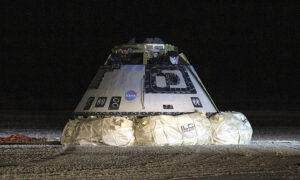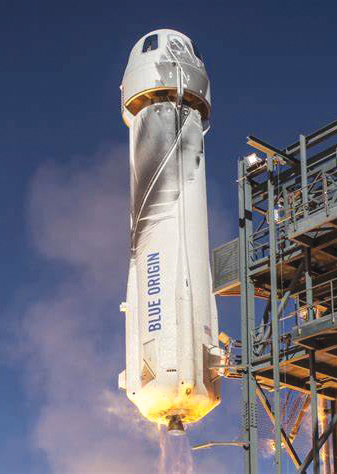By Mike Ward, CCE, Senior Vice President, Government & Public Affairs
Looking at the year that lies ahead, 2020 is shaping up to be a banner year for space in the Rocket City with a combination of new space vehicles, new rocket engines and other space assets.

Photos courtesy of NASA
NASA’s big new rocket, the SLS, will see major strides towards its missions to the moon and Mars this year. In early January, NASA moved the fully assembled and integrated SLS Core Stage to the test stand at the Stennis Space Center. There, the new rocket’s tanks and engines will undergo a series of tests known as the “Green Run” to certify the rocket’s readiness to launch. The Marshall Space Flight Center and prime contractor Boeing have had the lead on the development of the SLS Core Stage and boosters that will take astronauts back to the Moon and ultimately, to Mars, on the Orion Space Capsule. The first launch of the SLS is scheduled for 2020, but it is likely that the launch will slip into 2021.
Picking up where the Space Shuttle left off, Boeing’s Starliner capsule (shown left) will launch a crew later this year to the International Space Station. Much of the design work on the capsule was done at Boeing’s Research and Technology Center in Huntsville and the Atlas rocket that will launch the capsule was manufactured at the Decatur ULA manufacturing facility. A test of the Starliner in late 2019 failed to dock with the Space Station due to a booster malfunction. However, other test objectives showed the capsule was ready to be placed in service. SpaceX is also expected to launch a crew to the space Station in its Dragon Capsule in 2020.

Huntsville will see another significant space milestone with the ribbon cutting on Blue Origin’s BE-3 and BE-4 rocket engine production facility, in Cummings Research Park, early in 2020. Blue Origin was founded in 2000 in Kent, Washington by Jeff Bezos and began developing both rocket propulsion systems and launch vehicles. Since its founding, Blue Origin has been developing a new fleet of rockets – the New Shepard (shown right) and New Glenn vehicles – for both suborbital and orbital operations.
The BE-4 engine, fueled by the less commonly used methane (liquid natural gas), will generate 500,000 lbs of thrust for both the New Glenn Rocket and the ULA Vulcan rocket. Vulcan will replace ULA’s Atlas vehicle.
The BE-3 engine is the hydrogen-fueled, primary engine for the New Shepard suborbital rocket. The New Shepard rocket is expected to begin offering trips to the edge of space in 2020 for space tourists willing to shell out ~$200,000/seat.
Production at the CRP facility is slated to begin later this year.
This article appears in the February 2020 issue of Initiatives magazine, a publication of the Huntsville/Madison County Chamber.




